The Gepanzertes Transport-Kraftfahrzeug Boxer (GTK) MRAV is a modern all-wheeld German multirole armoured fighting vehicle, featuring an innovative concept of rapid plugin mission modules. Partners changed during the development, and today the vehicle is produced by Munich-based ARTEC GmbH industrial group, after the development by OCCAR (Organisation for Joint Armament Cooperation). It is a joint venture between KMW and Rheinmetall Military Vehicles GmbH, the latter having a 64% stake. Other customers after Germany (which fields 403) are the Netherlands (238), Lithuania (81), Australia (211) and the UK (623) with Ukraine expected to receive 36 RCH-155 derivative. Potential customers were Algeria, Qatar, Slovenia, Japan and Spain.
Development
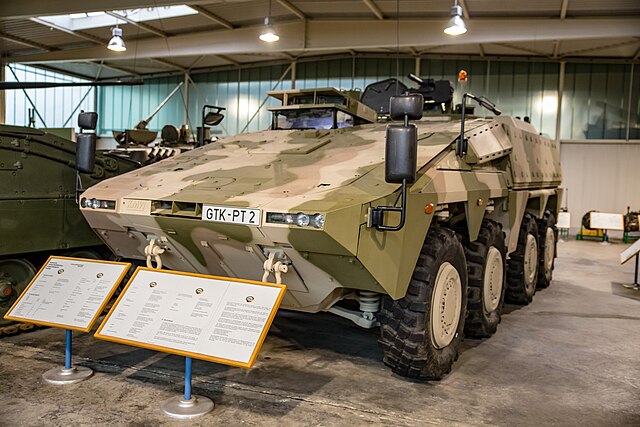
Prototype
The Boxer started in 1993 as a joint venture between Germany and France (sounds familiar ?). Yet under another political top-down attempt to force industrial cooperation and build better standardization in European equipments. UK joined the project in 1996. An eye watering £70 million contract was signed in November 1999 for providing eight prototypes, four for Germany and four for the UK, as France bailed out of the programme in 1999. They designed the Véhicule Blindé de Combat d'Infanterie (VBCI). Main reason given was the French found it too heavy for their rapid deployment force, notably in Africa (real reasons being probable tech know-how protection by Nexter). The VBCI indeed is "only" 28.5 to 32t versus 35-36t for the Boxer.
In February 2001, the Netherlands joined in, and obtained four prototypes for its evaluation. The official program name was by then GTK or MRAV or PWV in either countries, and the first prototype was showcased on 12 December 2002. The name "Boxer" was associated with the second prototype. Then a production run was signed for 200 vehicles for all thre countries. However suddenly the British MoD announced its withdrawal from the programme to instead opt for the "Future Rapid Effect System" (FRES) in July 2003.
By October 2003, the first Dutch prototype was sent for trials. By October 2006 the Netherlands confirmed 200 Boxers, replacing its ageing M577 command post vehicle (drived from the M113) and its support variants of the YPR-765. First deliveries of the Pantserwielvoertuig (PWV) were scheduled in 2013 and production was to continue until 2018.
On 13 December 2006 the German Bundestag approved 272 Boxers instead of 200 to replace the Bundeswehr's M113 plus its variants, and its Fuchs TPz 1 Production was initially planned to start in 2004, but was delayed to September 2009. All this time over seven years, the prototypes accrued covered 90,000 km in reliability trials, 90,000 km to establish durability. To reach an acceptable production rate, three facilities were setup for the for Boxer. Rheinmetall Netherlands was to provide the ones for the Dutch order, and Krauss-Maffei Wegmann, Rheinmetall in Germany those of the Bundeswehr.
Design
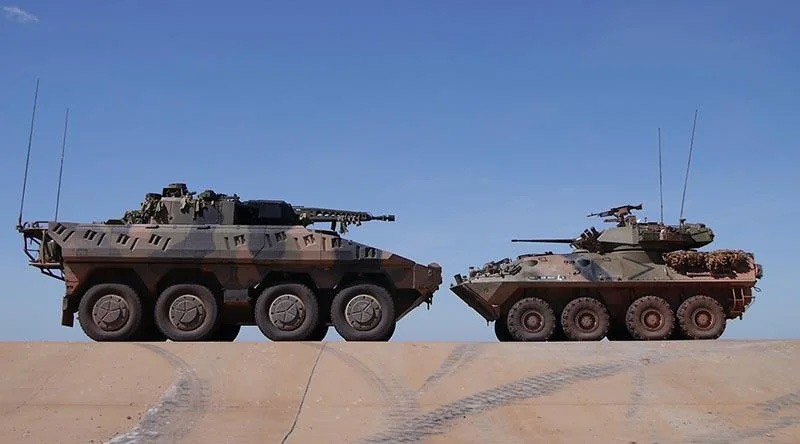
Comparative between the massive Australian Boxer and puny ASLAV, showing the generational gap (pinterest)
The very core of the design was it's first true 'modular' approach. Unlike all previous attempts, which focused in modifiying the rear compartment, the KMW approach here was far more radical, and aimed at proviuding basically a tracked platform comprising the front section and engine, the 8x8 chassis, and leaving the whole rear section empty like a "bathtub" in order to be fitted with an external module. This could be done with a crane vehicle in the field. This present the ability to change mission in a very short time, under 24h, and convert for example an ambulance to an IFV variant, an APC to a radar or command vehicle and vice versa in a blink of an eye.
Chassis
The is an eight-wheeled multirole vehicle quite comparable to the most popular wheeled offer worldwide since the Piranha. However it came with increased weight and dimensions, passing well the classic 30 tons trshold to 41 tons in the heaviest variant ever field tested. The early model weighted 36.5 tonnes in 2016 (A1/A2) but 38.5 tonnes on the A3 configuration. The heaviest variant is the remote-controlled howitzer, at 39 tonnes. There are today several designs that are closing on 50 tons.The modular approach
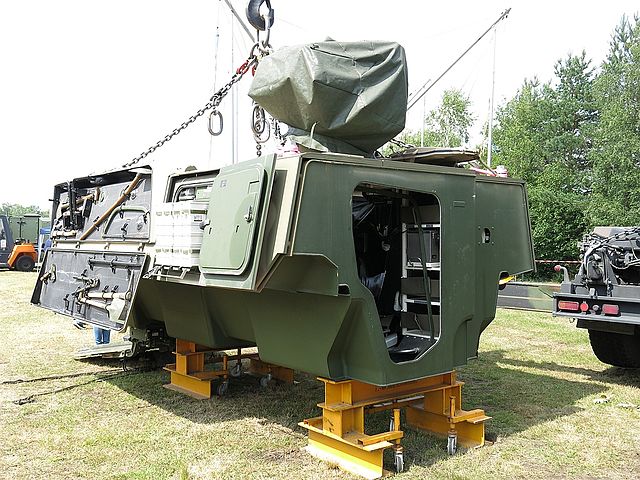
A typical module, separated, compatible with standard ship containers
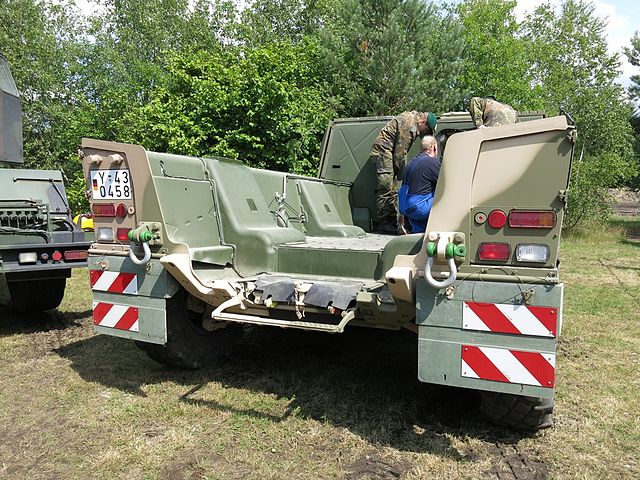
The empty "drive module" ready to receive one.
The main vehicle is considered the "drive module" but also called the "platform" or "drive-line module", with the wheels, engine, transmission and fuel tanks, as well as the driver's position. The A0 (60 delivered) A1, A2, A3 drive modules all displays the same "bath-tub" rear section, like a boat's hull, open at the rear, ready to receive its variable module. The latter is installed and secured to the chassis below via four attachment points above the suspension wells. The latter also provides electrical feed and contact, as well as communication to the driver's compartment. In this configuration, the driver is located to the front right, and power pack to the front left. The whole crew, including the commander are located in the plugin modules and thus its position and optics changed for each.
Powerplant
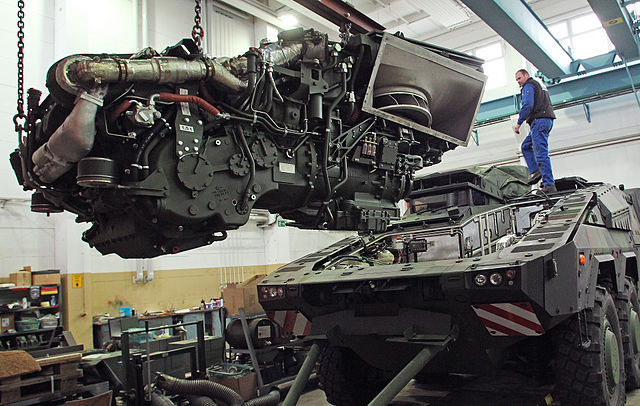
The MTU main engine unit being replaced
The Boxer is powered by the MTU/Allison 8V199 TE20 developed from the Mercedes-Benz OM 500 truck engine but modified with a specific turbocharger, fuel injection and cooling systems provided by MTU. It is rated for 720 PS (530 kW), provides a 2,699 N/m (1,991 lb/ft) torque, and power to weight ratio ranging from 18.7 PS/t (13.8 kW/t) to 20.6 PS/t (15.2 kW/t) depending on versions, the first being the A2/A3 and the first the A0. The A3 came out with the MTU 8V199 TE21 rated for 820 PS (600 kW) with an engine torque of 2,999 N/m (2,212 lb/ft). The modular approach was kept for the compartment, with the ability to change the complete powerpack in the field in about 20-30 minutes and be tested-run outside if needed.
This MTU powerplant is connected to a RRW3001 angular gearbox, Allison HD4070 automatic, 7 forward, 3 reverse gearbox on all wheeled models, hence the "MTU/Allison" unit name. The way the 8x8 is managed is through a 4 axle differentials with 2 inter-axle differentials and 2 standard differentials for a permanent contact (differential locks on all axles and front four wheels steering). The chassis procures an all-wheel drive, but with front four wheels steering only. Rear axles are mobile but unsteered. Suspension comprises double-wishbone coil springs, fully independent, Hydro-pneumatic with additional shock absorbers.
Tyres are for the first serie the Michelin tailor made XML 415/80 R27 and later the 415/80 R685 Michelin XForce 2 on the A2/A3 and Aussie Land 400. Next upgrade for the orders are the 415/80R 685 Michelin XForce ZL rated to carry 5,600 kg each. They are linked to a central tire inflation system (CTIS) and all tires had run-flat inserts to runfor 30 km at 50 km/h after puncture. Artec's trials in December 2021 with an "empty" Boxer (no module mounted) but ballasted to 41 tonnes was capable of gaping 2.2m trenches, climb a 60° slope and 1m vertical step. This thus enable the capabiliy to fit 15+ tons modules if needed.
Performances are a top speed of 103 km/h (64 mph) on road, and 45 km/h (28 mph) off-road with a road range of 1,050 km (650 mi) and on average: 650 km (400 mi) with off-road runs. Ground clearance is 0.50 m (1.6 ft). The vehicle was also tested stable on a 60% side slope and its turning radius is about 10.5 m (34 ft) with only its tow forward steering axles or 7.5 m (25 ft) in skid steering. So it is almost capable on turning in place. The vehicle can brake hard as well, provided Knott pneumatic ABS on all wheels but main braking power on the front two steering axles.
Protection
Passive
The armoured body on all versions, including the Mk.1 tracked, with Rolled all-welded steel armour on the STANAG 4569 level 6 (defeating 30 mm AP and APFSDS), providing all around protection against Russian 14.5 mm level 4 (armoured piercing rounds). The floor was able to resist only small epxlosives on the A0, having only a Rolled welded steel armour (RWSA), it was upgraded from the A1 onwards to mine/IED blast (AMAP-IED, AMAP-M). It was tested running with two tyres blown off as well.The Mission module is also made in rolled all-welded steel armour and offered a basic AMAP-L grade protection (spall liner), with AMAP-B on option (ballistic, small arms) taken from the BD Diesenroth AMAP modular armour package, fitted with shock absorbing mountings. And depending on the mission module, it could go from basic from STANAG 4569 level 2 (7.62 mm fire) to level 6 (30 mm armoured piercing shells, specs classified). This is likely the one used on the turreted IFV variant. Baseline armour offers an all around protection against 14.5 mm AP (level 4) as standard.
As for the modules, they offers various mine protection features, like seats decoupled from the floor, a roof armour designed to withstand shrapnel, bomblets of High-Explosive Anti-Tank (HEAT) warheads, but not payload carried by drones or wandering ammunitions (yet). The mine protection package of the A1 and following, consists in a set of moduled instealled over the belly and wheel stations while the platform is given an additional armour package protecting against side and underbody blasts, composed of AMAP-M and AMAP-IED. This package is rated to 1,058 kg.
Active
The Boxer comes up with a range of systems:-NBC collective, with an external detector, full sealing, air conditioning/filter with overpressure.
-Auto detection and fire suppression system, Halon type in the main module, engine and driver's compartments.
-4 to 8 smoke dischargers, located on the traversing combat post/Cupola or turret depending on the case.
-Classified laser warning detector
-Classifed ECM system to jam IEDs receptors.
Tactical Transport
Modules could fit on standard 38-tonner flatbded, a standard tactical transport truck and can be airlifted by most models available, such as the new European Airbus A400M. This feature never was reached before, making the Boxer proposal quite interesting on the Euro/international market. This feature, to be able to match the cargo bay of the A400M was defined at the start, knowing the ongoing program development of the tactical airlifter.The full height of the vehicle prevents howeve it's fit inside the cargo bay, whereas the ramp is not strong enough, thus, the vehicle could be loaded separately, with the drive module followed by a palletized module in one go. The module could also fit inside a Loockheed Hercule's bay, or the C-17 airlifter and above, but not the C-130 Transall (now being replaced). I should be noted that most modules could also be transported inside a standard 20ft or 40ft universal ship/road container as under 8 x 8ft 6 inches in width/height.
Variants
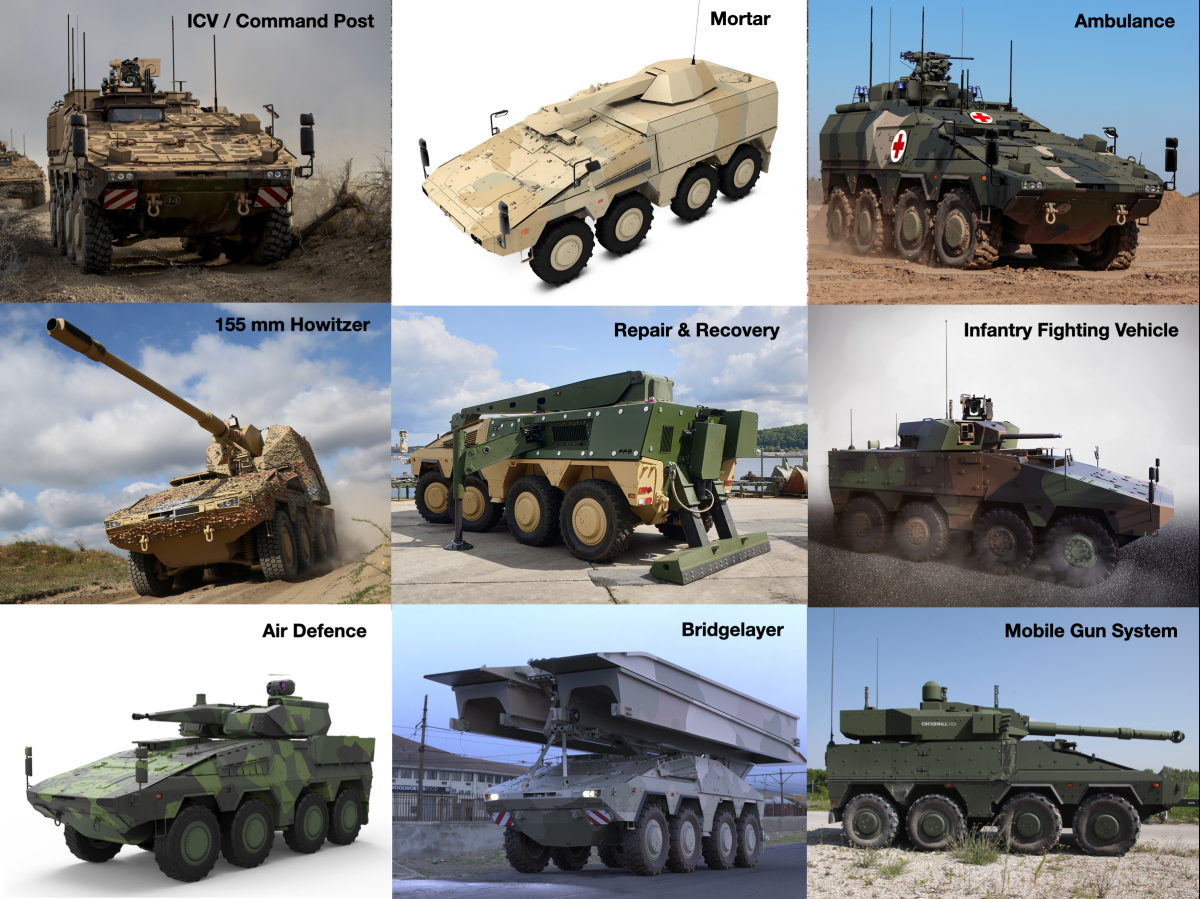
The boxer family - src www.Uk-landpower.com
These are function of the number of modules that can be cranked out by Artec. The latter two years ago (April 2022) declared 23 mission modules being designed, and in completion, two more studied (now complete). Ten were manufactured and ready for delivery or delivered already, five under production start, eight at prototype and concept stage with constant feedback from the customers and contractors. Some modules could also be internally reconfigured, such as the Ambulance one, representing two variants of the very similar model.
Boxer APC
The armored personnel carrier is considered the "baseline" configuration with 125 of such modules ordered by the Bundeswehr on the total order of 272 and 131 more for the second order called the Gepanzertes Transportfahrzeug (Boxer GTF) A2. It van carry ten men, a platoon, with their full equipment.Boxer CP (Command Post)
The module is tailored for command and control, centre for tactical communications at platoon and batallion level, with encrypted and Secured communication and all the modern displays for an all-around, all time situational awareness and all the datalink interfaces for network warfare. It exists in two internal arrangements and configurations:-Standard CP (Platoon level): Four workstations, commander/weapon operator, 1 staff officers, 1 assistant +1 more. 65 ordered by the Bundeswehr, 36(60 initially) by the Dutch Army, also ordered by Australia and UK.
-IFV CP: For Lithuania as its command post variants is based on the IFV.
-UK variant, specific British command and control mission module for the "Mechanised Infantry Vehicle Command and Control" (MIV-CC)
-Australian tailored command and control mission module, with another specialist surveillance mission module.
Boxer SAN (Ambulance)
72 ambulance modules ordered, 52 for the Dutch. Mission module with raised roofline (height 1.85 m, volume of 17.5 m3). 7 casualties all seated or 3 lying down on stretchers and combos like 3 seated, two lying, 4 seated, 1 lying down. Apart the driver, there is a commander and single medic. The Dutch vehicle is tailored for medical evacuation, not treatment unlike the BDR version. Australian/UK ambulance modules are on order (UK: "Mechanised Infantry Vehicle Ambulance"/MIV-A).Boxer CRV (Combat Reconnaissance Vehicle)
This basically is the IFV variant, the most common after the APC. It was designed at first to meet the Australian Land 400 Phase 2 requirement, with 2 main sub-variants and 211 ordered, 38.5 t chassis. Production was split in three: Block I (25) were manufactured in Germany, Block II (186) manufactured in Australia plus 12 additional swappable extra MM (mission modules) for a total of 223.German Boxer CRV I
133 ordered to Rheinmetall with the Defense Lance modular turret system (MTS), two-manned. 12 Block with the MK30-2/ABM cannon, to be upgraded to Block II.Austrlian Boxer CRV II
121 Australian built, redesigned turret with 2 Spike LR2 missiles and Elbit Iron Fist APS (Active Protection System).German Boxer CRV II
March 2023 the BDR announced 128 CRV II delivered from 2025 to Bundeswehr in replacement for the Wiesel MK/TOW variants used by the Jägertruppe.Dutch Boxer CRV-CMP
13 on order for the Royal Netherlands army based on the GNGP Engineer Vehicle and made in Germany.CRV-C2
15 CRV-C2 and 4 MM for command and control variant were also order by the NL.CRV-JFS
29 CRV-JFS and 5 MM were also ordered as joint fire support vehicles with guiding laser system/radar on a telescopic and stabilized mast, to be used while driving.CRV-REP
11 CRV-REP and one 1MM were also ordered by the NL. It's the reparation variant with the crane module.CRV-REC
10 CRV-REC + 2 MM also ordered by the NL: As the recovery variant with winch module.CRV-RWS
Australian ordered 82 with a Remote Weapon Station called the "R400S-MK2-D-HD RWS" made by Electro Optic Systems Australia with a new light 30mm canon (M230) and coaxial machine gun (7.62 mm), 3D stabilized. The module could be swapped or kept as spare for 13 MPV, 19 C2, 34 JFS, 12 REC and extras for the ambulance variant.20 MM frames
System to transport mission modules on trucks in standard ISO containers. Many order orders, quite useful for fast deployment.Vilkas (Wolf)
This is the Lithuanian variant with 89 (on 91) equipped with the Rafael Advanced Defense Systems Samson Mk II RCT turret (fully stabilised Orbital ATK Mk 44S 30 mm DF cannon plus 7.62 mm co-axial and Spike-LR ATGMs). Options includes an unmanned Lance turret (from the PSM Puma IFV). The Vilkas will be declined into four sub-variants: -55 IFV squad leader-18 IFV platoon leader
-12 IFV company leader
-4 IFV command post.
Depending on the type they could receive additional voice and data communication equipment, modified BMS. Two driver training vehicles also were ordered.
Boxer Geniegroep
Dutch engineering and logistics support vehicle carrying both troops and engineering equipment in its module. Six sets and personal equipment and stowage section for munitions. Used as support vehicle to perform route clearance, mine clearance, demolition. Replaces the YPR-765 prgm/PRCO-C3 variant. The final order for 92, saw 12 converted as BDR.Boxer BDR
Boxer Battle Damage Repair (BDR) vehicles, with seats for personal and a module filled with special equipment, tools, supplies and displays for diagnoses, maintenance and minor repairs with a crew reduced to the engineer commander, driver, observing commander, gunner, and five engineers. Australia accepted 13 for itself, all German built.Boxer Cargo
Another Dutch-specific variant replacing the YPR-765 prv with the module cleared to make a special loading floor for cargo during for 2x standard 1-tonne army pallets and total 2,5 t. Interior adaptated to all payloads and intended to also carry civilian relief loads for peace-keeping missions. The compartment can be tailored. Crew: commander/gunner, driver. 27 ordered initially, revised to 12.Boxer DTV
Driver training vehicle (DTV) with training module, apprentice staying in the driver compartment, but instructor seated in an elevated cabin with doubled commands to take over. Light armour protection and in case of a roll-over both instructor and observer seats are electronically retracted inside the Module. Full duplicated control and display unit on the gear selector, brake and accelerator pedal or full Steering override in option. In addition to the trainee driver, instructor, two additional trainee passengers can be carried. So far it was ordered by Germany, Australian, the Netherlands and and Lithuania, largest users of the type.British Variants
Base protected mobility PM and MIV-PM), command and control (MIV-CC), ambulance (MIV-A), repair/recovery (MIV-REP). Australian-UK joint own repair and recovery mission module in the works. The full named is Mechanised Infantry Vehicle Repair and Recovery (MIV-REC). 285 in order total. C4I configurations: Command-and-control (C2) and C2 utility, 19 observation post, 24 beyond-line-of-sight observation, 11 EW/SIGINT platforms.Boxer C-UAV
10 ordered Boxer C-UAV (Counter UAV) vehicle back to December 2019 at Kongsberg and Hensoldt. Tested by June 2020 with live firing? Deliveries started in 2020. First variant had a single sensor 120° azimuth. Usable by the NATO Response Force Very High Readiness Joint Task Force (VJTF) for 2023.Boxer HWC (heavy weapon carrier)
Replacing the Wiesel HWC, and with the CRV turret with Puma's 30 mm cannon and Mehrrollenfähiges leichtes Lenkflugkörper-System (MELLS) Spike LR. Complation, tests and training FY2025. 3 Batallions equipped FY2027, 100 ordered in March 2023.Boxer JFST
Joint Fire Support Team variant, with the Panoramic Above Armour Gimbals (PAAGs) FY2023, full delivery by 2025. The new vehicle will be called in Bundeswahr ordnance the Joint Fire Support Team, schwer (JFSTsw).Boxer JODAA demonstrator
The Boxer Joint Operational Demonstrator for Advanced Applications is a technology demonstrator made by Rheinmetall Landsysteme only made to be super-modular for R&D for potential modules improvements. The base is the armoured medical treatment module, regularly refitted for tests with new systems. Not intended for production.Boxer Skyranger 35 SPAA
Demonstration module sporting the Oerlikon Skyranger 35 turret as a SPAAA. Rheinmetall's 35mm x 228 Revolver Gun, dual feed and two types of shell possible notably the Advanced Hit Efficiency And Destruction (AHEAD) for air defence and ground targets. The second ammo is the Frangible Armour-Piercing Discarding Sabot (FAPDS) ammunition to deal with APCs and IFVs. Cyclic rate of fire 1,000 rpm, in typical burst of 20-24 rounds.Boxer Skyranger 30 SPAA
Same concept but with the Skyranger 30 turret shown at Eurosatory 2022. Autocannon firing time fuzed 30x173 mm plus two short range missiles, MANPAD style (Stinger/Mistral) with 5x AESA radar arrays, day/night electro-optical sight.Boxer IFV Demonstrator/RCT30
Technology demonstrator by Rheinmetall to propose tailored module configuration, but for an IFV variant. Another one is also used by KMW. Equipped by the unmanned Rheinmetall RCT turret similar to the PSM of the Puma IFV. Forward of the module, fully stabilized with Orbital ATK 30 mm MK44 dual-feed cannon, optional coax 7.62 mm MG and KMW FL 200 RCWS (12.7 mm HMG) swappable by a 5.56 mm/7.62 mm LMG/40 mm AGL standard grenade launcher Mk.48. It is tested also with the Mauser MK30-2 ABM.Boxer Armoured Recovery Module (ARM)
Repair and recovery mission module by FFG usable for maintenance and possessing sub modules if required. Not ordered yet.Boxer RCH155
Heavy artillery variant. It mounts the KMW Artillery Gun Module (AGM) developed from the Panzerhaubitze 2000 155 mm/52 turret. The latter is much more compact, albeit taller, and high automated. Proposed for export for greater strategic mobility compared to the PzH 2000. Trials done in 2019, and by December 2020 KMW announced developmental testing of the Remote Controlled Howitzer (RCH) from 2021, a fully automated, remote version. None ordered yet.Boxer, direct fire support
SPG variant proposed by John Cockerill Defense: The module supports a C3105 two-person turret with a 105 mm rifled gun, demonstrated to KMW to add to the export inventory. Tests were made in 2020, Firing trials postponed due to COVID-19 restrictions to 2023. No export yet.Boxer WFEL bridging module concept
The Boxer AVLB or Bridgelayer variant. WFEL bridging module concept designed by WFEL and KMW as private venture to potentially replace the Leguan. It was tested able to deploy deploy a heavy 14 m or a light 22 m bridges as exhibited in September 2021. They are considered separate Mission Modules. No order yet.Boxer ARTHUR
British module proposed at the 2020 Omega Future Indirect Fires/Mortar Systems conference. Made by UK Saab as concept for long range WLR and taking advantage of the Saab in-house sensor technologies.Boxer Mobile LWS
The Boxer Mobile LWS (laser weapon system) is a demonstrator version of the Boxer armoured medical treatment vehicle fitted with a RWS coupled to a Rheinmetall RMG 12.7 mm HMG. It is fitted in an unmanned turret with fully-automated MANTIS system for quick swap of the ambulance module. Not ordered yet.Boxer Overwatch SPAAML
British Demonstrator module fitted with a launcher for Brimstone missiles shown at the Defence Vehicle Dynamics (DVD), Millbrook Proving Ground (21-22 September 2022). Developed by RBSL with MBDA to answer the British procurement programme Mounted Close Combat Overwatch (MCCO) system. Proven superior in range and accuracy to the Swingfire to replace the old FV102 Striker. Part of the Battle Group Organic Anti-Armour (BGOAA) initiative. The module hosts a single eight-cell launcher with 53 kg Brimstone 3 missiles facing to the left, lowered to a horizontal position when travelling, raised to fire. Proposed to shorten the development cycle. Lockheed Martin UK also works on the Future Armoured Vertical Launcher (VLS) also for 16x 50 kg class missiles like JAGMs with reloading arm, sensor mast, NATO link-16 to be compatible with the MORPHEUS and SkyKeeper systems and interface with the F-35Bs.GTK Boxer A1/2/3 wheeled specifications | |
| Dimensions | 7.93 x 2.38 x 2.99 m (26 x 7.8 x 9.8 ft) |
| Weight battle ready | Chassis alone 25.2 t, max 36.5 -41t |
| Crew | 2+ module dependent |
| Propulsion | MTU 8V199 TE20 720 PS (530 kW), 2,699 Nm (1,991 lb/ft) 20.6-18.7 PS/t |
| Transmission | Allison HD4070, automatic, 7 forward, 3 reverse, RRW3001 angular gearbox |
| Suspension | 8×8-drive with 4 axle differentials, hydro-pneumatic independent suspension |
| Speed (road) | Variable, module dependent, c110 kph road |
| Range | Same, estimated c800 km |
| Armament | Module dependent, see notes |
| Total production | Ongoing, c800 made, +1100 on order |
The tracked Boxer
Krauss-Maffei Wegmann (KMW) presented a tracked variant at Eurosatory 2022. It was armed with a KMW RCT120 mission module, remote-controlled turret (120 mm smoothbore gun and autoloader, two Spike LR launchers, Trophy hard-kill APS, RWS and 30mm coax autocannon in option. The module in addition is stil capable of carrying six infantry. Top weight declared 45 tonnes. None ordered so far, but the tracks are helping to reduce ground pressure compared to the wheeled version. So far, no IFV (supposed to carry infantry) as ever being equipped with a such a lage cannon. If adopted, this could be a very potent "ligh tank" to modern MBT standards in a market which seems to bounce again.Tracked Boxer Mark I specifications | |
| Dimensions | 7.56 x 3.78 x ? (24.8 x 12.4 x ?ft) |
| Weight battle ready | 28 ton chassis, 45t overall |
| Crew | 2+ 6 infantry. |
| Propulsion | MTU 881 Ka-501 CR 1,200 PS (880 kW) |
| Transmission | Renk HSWL 256, automatic, 6 forward, 6 reverse |
| Suspension | 6 rollers, hydropneumatic in arm Hostsmann |
| Speed (road) | c70kph (43 mph) |
| Range | 500 km (310 mi) |
| Armament | 120mm sb auto, 0.5 cal. RWS+0.3, 30 mm coax, 2x Spike ATGM |
| Total production | 1 demonstrator |
Production & Procurement History
✸ December 2015: Germany ordered 131 more Boxers (476 million €). Lithuania selected the Boxer.✸ August 2016 Lithuania ordered 88 Boxers/Vilkas (Wolf) (385.6 million €), 53 by KMW, 35 by Rheinmetall 2017–2021.
✸ July 2016 Boxer down-selected (4 competing vehicles) for Australia's Land 400 Phase 2 project;
✸ June 2017 It was annouced an upgrade of the A1 fleet to A2 standard starting in June 2015
✸ July 2017 Upgrade of 38 A1 to A2 awarded to RMMV, end in 2020.
✸ November 2017, a company (11 Boxers) exercised with the British Army on Salisbury Plain.
✸ February 2018 Artec signed agreements with UK suppliers (60% MIV contract done in Britain) plus final assembly.
✸ March 2018 Rheinmetall Defense Australia (RDA) selected to deliver 211 vehicles 2021-2026.
✸ March 2018 UK is back to the programme
✸ April 2018 Boxer selected to meet the Mechanised Infantry Vehicle (MIV) requirement.
✸ 17 July Dutch MoD announced its first production cargo variant.
✸ 18 July the Lithuanian MoD announced the first two Boxer started trials in Germany.
✸ 19 July 2018 the UK MoD intends to purchase 400 and 600 Boxers in four variants, service by 2023, with options for 900.
✸ March 2019 the Australian Ambassador inspected the first Boxer delivered before shipping
✸ July 2019 first two Boxer on 25 arrived in Australia (13 recce, 12 MPVs) for specific modifications.
✸ July 2019 first two Vilkas derlivered to Lithuanian MoD, with 15 to be delivered 2019, last in 2023.
Variants
Boxer A0
Weight 24t with a limit capacity of 35t, MTU 8V199 TE20 engine rated for 20.6 PS/t (15.2 kW/t) and Rolled welded steel armour (RWSA). 56 delivered 2009-2011.Boxer A1
Weight 25.2t, limit 36.5 t. Same engine but 19.7 PS/t (14.5 kW/t), RWSA + AMAP-IED, AMAP-M armour. First 56 vehicles upgraded 2012.Boxer A2
The A2 took indeed the lessons of Afghanistan deployments. Drive and mission modules modified, new driver vision system, new stowage concept in both modules, modified gearbox, new automatic fire suppression system, new RCWS, interface for IED jammer, satellite communication. Same engine, same protection. In July 2017 ARTEC awarded Rheinmetall MAN Military Vehicles (RMMV) the upgrade of 38 Boxers to the A2 standard (€21 million) completed by mid-2020. Total at the time in BDR inventory: 124 Boxer APCs, 72 ambulances, 12 driver training vehicles.Boxer A2/A3 hybrid
Much heavier model weighting 38.5 t for the tactical variants and 41 t for the technical variants. Same powertrain as before but 18.7 PS/t (13.8 kW/t). Same protection as well.Boxer A3
Relatively similar to the A2/A3 with 38.5 t for the tactical variants and up to 41.0 t. It is powered by a MTU 8V199 TE21 rated for 820 PS (600 kW) 2,999 N/m (2,212 lb/ft) 21.3 PS/t (15.7 kW/t). The rest is identical to the A2/A3 (gearbox, transmission, suspensions, protection). It seems the preferred basis for large, heavier modules, HMC, SPAAG/SPAAML, tank hunter, and service vehicles.Customers
 Australia: 211 Boxers
Australia: 211 Boxers
In 2015 was initiated a program to procure a new vehicle to replace an ageing fleet of 257 ASLAV reaching their end life planned for 2021. Rheinmetall saw in 2016 its Boxer selected in the second phase to be tested wih three other competitor vehicles over 12 months. Rheinmetall offered to delivere the first batch of 20-25 in Germany but training teams for tech transfer back to Australia and building the remaining vehicles by the Military Vehicle Centre of Excellence (MILVEHCOE) at Brisbane, Queensland as master manufacturer along with 40 local suppliers, 1,450 jobs and evaluation to AUD15.7 billion for the acquisition (5.2 billion) and 10.5 billion for maintenance over 30 year.
The first 25 vehicles delivered were used for training by October 2020. Of the 211 to be delivered, there are reconnaissance, command & control, joint fire, as well as surveillance, multi-purpose, and battlefield repair and recovery (CRV). The reconnaissance variant: 133 with the Lance turret system, 30 mm automatic cannon.
 Bundeswehr: 400 Boxers
Bundeswehr: 400 Boxers
The first German Army Boxers A1 are 40 APC and 16 command post vehicles A0, later upgraded to as Boxer A1 and ported to the A2 standard starting in June 2015, with minor electrical and mechanical engineering improvements between them. Next was the A3 variant, which the British one purchased.
 Lithuania: 88 Vilkas
Lithuania: 88 Vilkas
Lithuania received 91 Boxers A2, 89 IFV and two driver-training vehicles. In it were 55 commander vehicle, 18 platoon-leader and 12 company-leader vehicles as well as 4 command-post vehicles. One IFV is used for maintenance training. The first driver training vehicles arrived by December 2017, the first IFVs in June 2019 wuth a full delivery at the fall 2023.
 Netherlands: 238
Netherlands: 238
One prototype was delivered to the Dutch Army for evaluation in October in 2003, and contract for the procurement of 200 in December 2006 (€1.2 billion or €1.429 billion end cost) and delivered 2013-2018. It inludes 36 command post vehicles, 52 ambulances, 92 engineering section vehicles, 12 cargo carriers and 8 Ddriver training vehicles plus were announced 38 additional without specifications as per 2022 Memorandum.
 British Royal Army: 623
British Royal Army: 623
From 31 March 2018 the UK government announced it returned the Boxer programme, and on the next 3 April the Boxer selection for the Mechanised Infantry Vehicle (MIV) requirement, publishing its intention on 19 July for 400-600, 900 in option and final potential procurement of 1500. The first entered service in 2023 and an option wazs negociated with Rhheinmetall, KMW and the constructor to locally build and export Boxers. By January 2019 Rheinmetall approved tje 55% share from BAE Systems in a joint venture called "Rheinmetall-BAE Systems Land" or "RBSL" headquartered at BAE Telford, Shropshire.
On 5 November 2019 was announced a £2.3 billion deal for four variants, 523 vehicles to start delivery in 2023 between the base APC or "protected mobility (PM)" and MIV-PM IFV MIV-CC (command and control) and MIV-A (ambulance), and ARV or MIV-REP. MIV-REP and MIV-REC are combined. So the total is:
-
285 APC on order:
- 85 infantry carriers PM
- 60 engineer section vehicles MIV-REC
- 62 recce/fire support vehicles MIV PM
- 28 mortar carriers (PM variant)
- 50 as support as repair vehicles MIV-REP
177 in the C4I configurations: - 123 command-and-control MIV-CC C2 utility vehicles
- 19 observation post vehicles
- 24 beyond-line-of-sight observation platforms
- 11 EW and SIGINT platforms
- 61 ambulances
- 100 drive modules without variant
 Ukrainian Boxers
Ukrainian Boxers
By September 2022 Ukraine announced its purchase of 18 Boxer RCH-155 self propelled howitzer (€216m, contract from German aid). In February 2024, 18 more were approved and as of today, they are still in training.
 Algerian Boxers (2019)
Algerian Boxers (2019)
Rumoured order in 2019 after a Boxer IFV photographed there and trialled by the army were later acccompanied by production mention start in 2020, 500 in 2023, but as of today this is still in discussions. src
 Qatari Swap from VBCI to Boxer
Qatari Swap from VBCI to Boxer
In 2017, Qatar announced a purchase of 490 VBCI 2 to France and by March 2018, selected Kongsberg for its MCT-30 turret and protector remote weapon station to be installed. However probably due to the cost of installing the systems, by December 2020, Qatar retracted from the contract and instead decided to purchase the Boxer, albeit in 2023 discussions with France were still going on.
 AWuW 2023 Program
AWuW 2023 Program
The Swiss Army is currently selecting a successor to the M109 KAWEST WE, it's own modernized variant of the cold war M109 through the procurement program "Artillerie Wirkplattform und Wirkmittel 2026" with Trials ongoing in 2023-24, the current second round of winners includes the Boxer-based RCH-155 and BAE Bofors Archer with a choice made in 2025. Rheinmetall proposed also to fit the RCH-155 on the old Mowag Piranha IV 10×10.
 Slovenian 2018 selection and cancellation
Slovenian 2018 selection and cancellation
In March 2018, Slovenia announced the selection of the Boxer to move two mechanised infantry battle groups, 48 planned, very close to the Vilkas IFV. By April 2018 the 120 mm mortar carrier was adpted but then postponed by January 2019, then rebounced by July 2021, for 45 Boxer IFV after an expert tactical study. Contract was signed with ARTEC in May 2022 via OCCAR an the order woill comprise four variants for €281.5 million, €343.4 total. In July 2022 the program was accelerared as stocks of Slovenian BVP M-80 were shipped to Ukraine including 22 in 2025 and 13 in 2026 as planned until brutally cancelled by September 2022, and a year later studying alternatives between the Freccia, KTO Rosomak-L, Patria AMVXP, and Piranha V, a new competition for 105 vehicles this time.
 Bulgarian 2017 Competition
Bulgarian 2017 Competition
In 2017, received offers for its future IFV and support variant program on 8×8 bases. The GTK Boxer, Mowag Piranha V, Nexter VBCI 2, Patria AMVXP, Freccia, Otokar Arma, FNSS PARS all competed in the first round. Boxer and VBCI were out by December 2017, Piranha V and Patria AMVXP retained. Eventually an agressive campaign by General Dynamics Land Systems to provide refurbished and cheaper Stryker were retained by September 2023 with, 183 sold at $1.37 billion.
 2017 JGSDF competition
2017 JGSDF competition
By 2017, a cooperation was signed between the German and Japanese governments for their new defence industry program, with a plan to replace the Type 96 APC, since Komatsu failed to propose a convincing successor. The German proposed to join the ARTEC collaboration but a competition was held in 2019 between the Patria AMVXP, GDLS LAV 6.0 and Mitsubishi Heavy Industries own design, and the the Patria AMVXP being eventualy selected in December 2022.
 Spanish 2015 Competition
Spanish 2015 Competition
In 2015, the Spanish Sjercito wished to replace its cold war era VEC-M1 IFV and its BMR-M1 as well as part of its large M113 fleet with a multirole common platform. The competition saw the Boxer, Freccia, Patria AMV, Piranha V, SEP and VBCI in a first round, and by September 2015 GDELS Piranha V was announced the winner, by December 2019 however after long, protracted discussions the new government cancelled the program, relaunched the competition by August 2020 and eventually choose home grown GDELS Piranha V from Santa Barbara Sistemas for 348 vehicles, €1.74 billion as "Dragon" VCR. Production is ongoing.
Sources/Links about the GTK Boxer
The GTK Boxer on thinkdefence.co.ukThe GTK Boxer on strategic-bureau.com
The GTK Boxer on artec-boxer.com (pdf)
The GTK Boxer on uklandpower.com
The GTK Boxer on militaryfactory.com
The GTK Boxer on warwheels.net
The GTK Boxer on forums.kitmaker.net/
The GTK Boxer on wikipedia
Gallery
Illustrations

Base GTK "diver module" without combat module
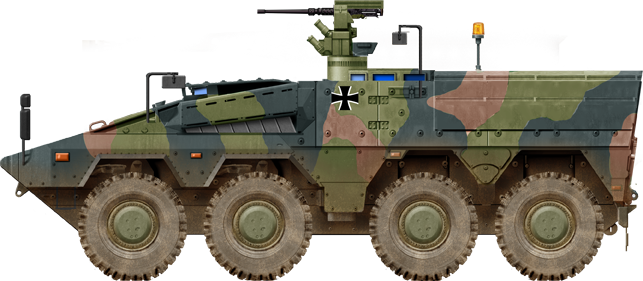
Boxer A1 411 Bat. 41 Pz.Grenadier brigade 1st Arm. Div.
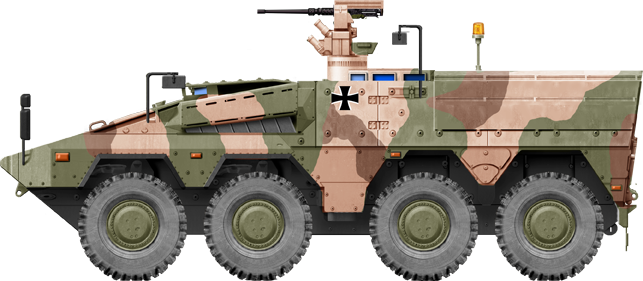
Boxer A1 33 Bat. Grenadiers 9th Brigade, 1st Arm. Div. Oldenburg Afghanistan
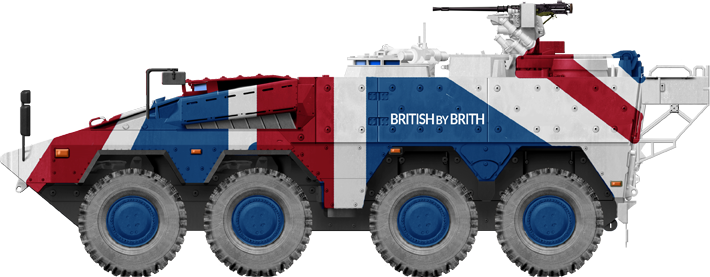
Boxer A2 demonstrator for the UK procurement program
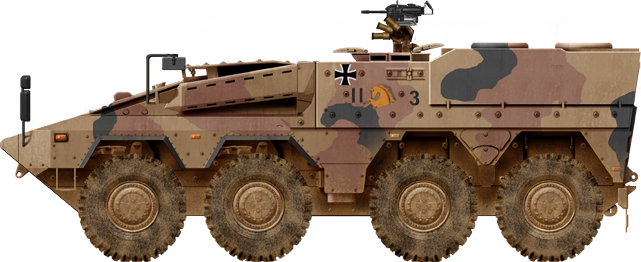
Afghan Boxer A2 APC Boxer
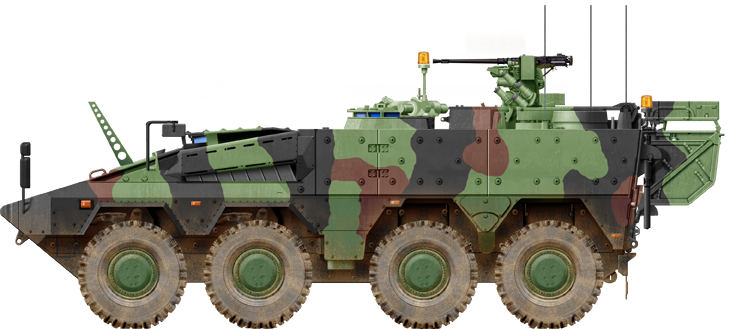
Boxer A1 Command Post of the Netherlands Army
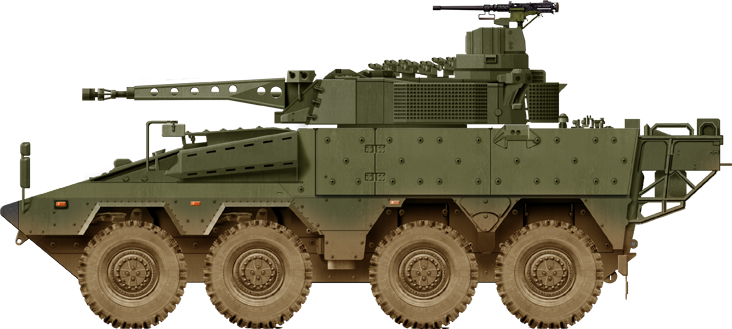
Basic Bundeswehr CFV variant demonstrator
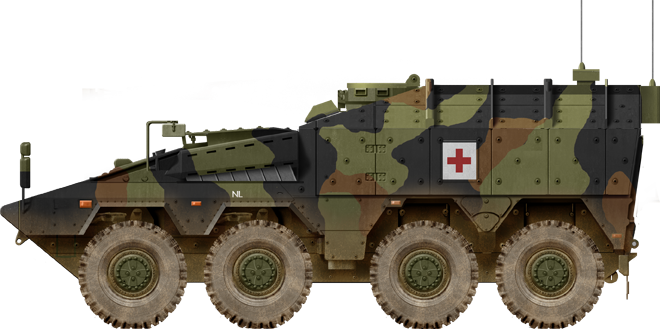
Dutch Boxer DVD Ambutank
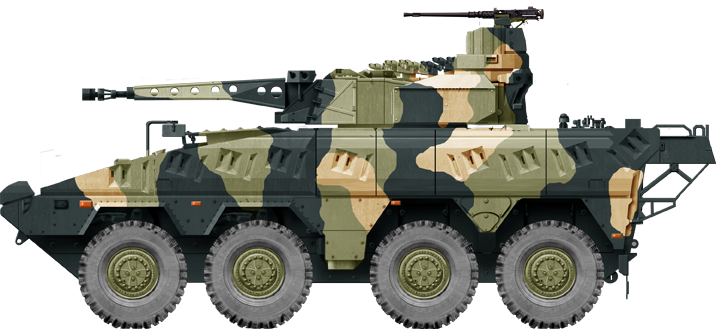
Australian Land 400 CFV
Photos
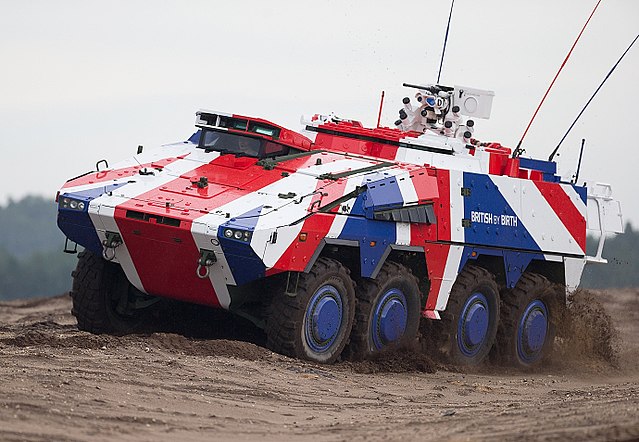
British Boxer demonstrator, Four Boxer variants will fulfill the UK's Mechanised Infantry Vehicle (MIV) requirement, these being Mechanised Infantry Vehicle Protected Mobility (MIV-PM), Mechanised Infantry Vehicle Command and Control (MIV-CC), Mechanised Infantry Vehicle Ambulance (MIV-A), and Boxer Mechanised Infantry Vehicle Repair and Recovery (MIV-REC).
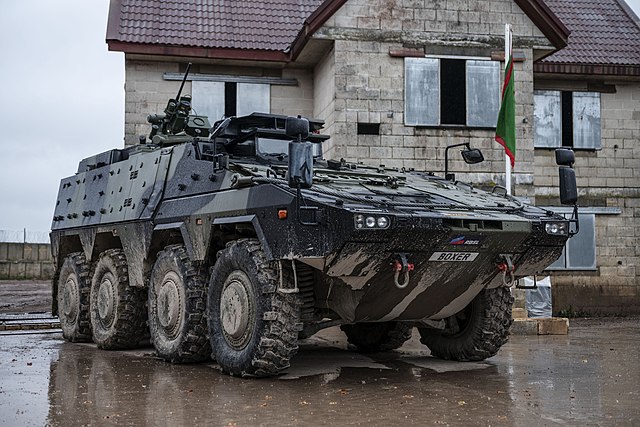
Boxer MIV on 2019 Army Combat Demo ACPD
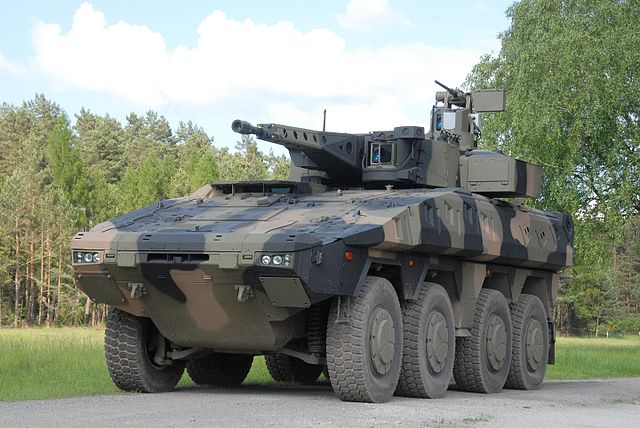
Australian Boxer CFV Land 400 Program
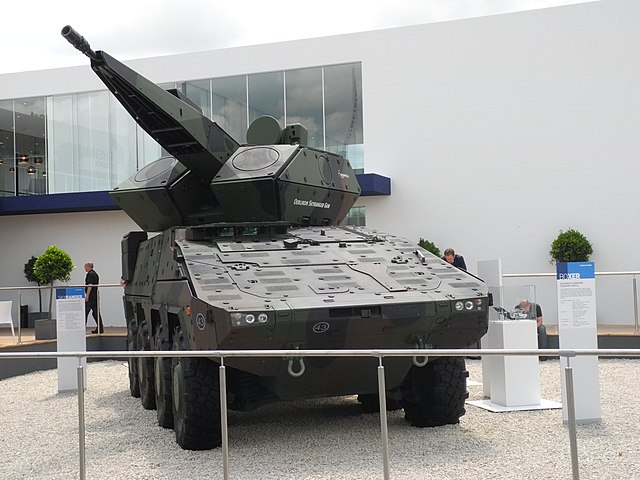
Boxer Skyranger 35 module
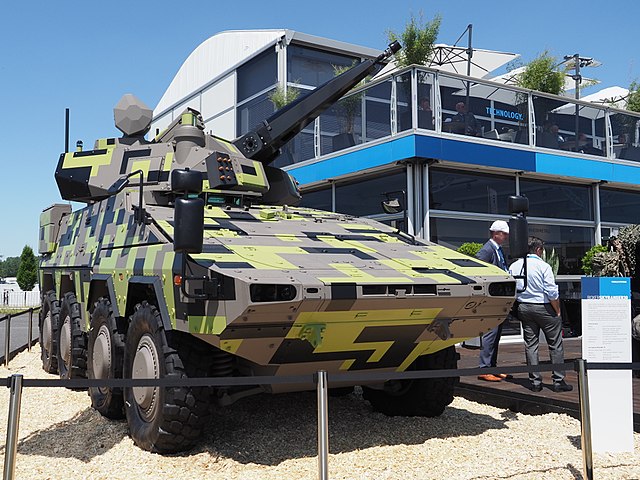
Boxer Skyranger 30 SPAA at ILA 2022

KMW RCH-155 self propelled variant
Fahrschulpanzer GTK Boxer
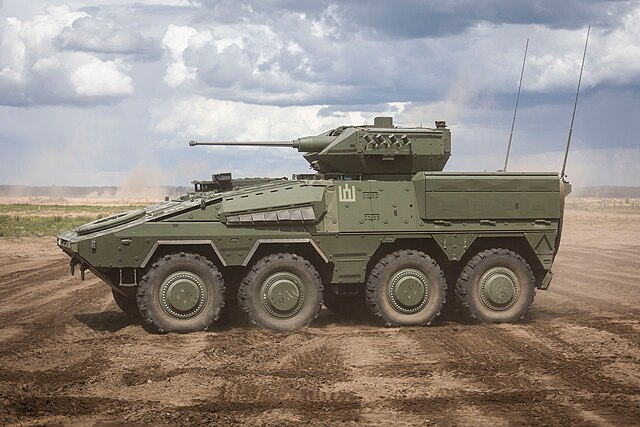
Lithuanian IFV Vilkas
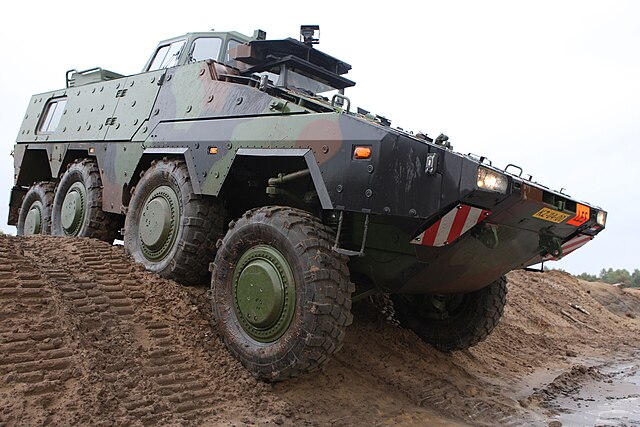
GTK Boxer Driver training vehicle (DTV)
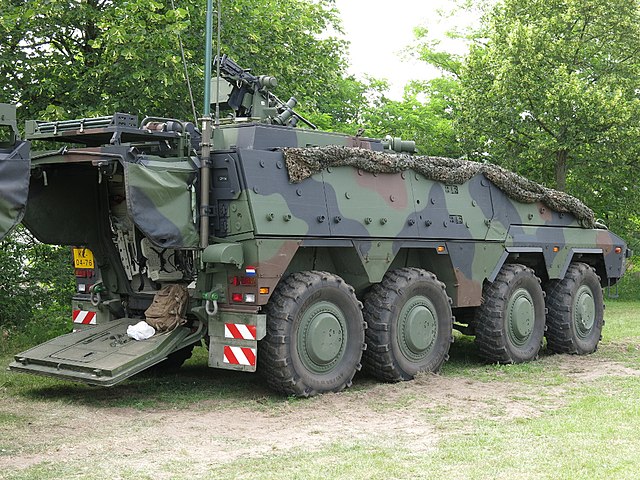
Dutch Boxer Command Post variant
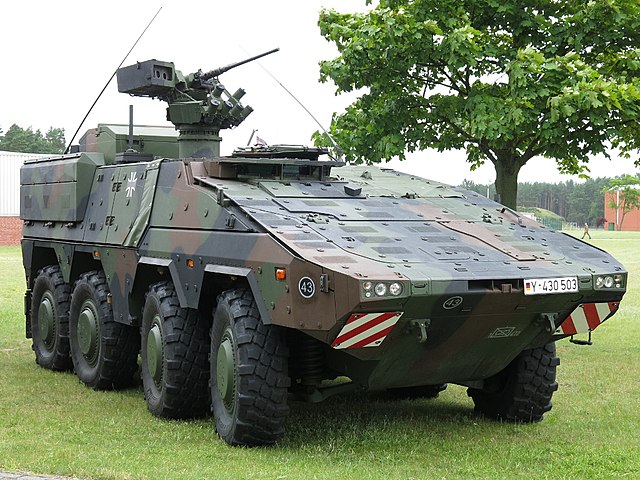
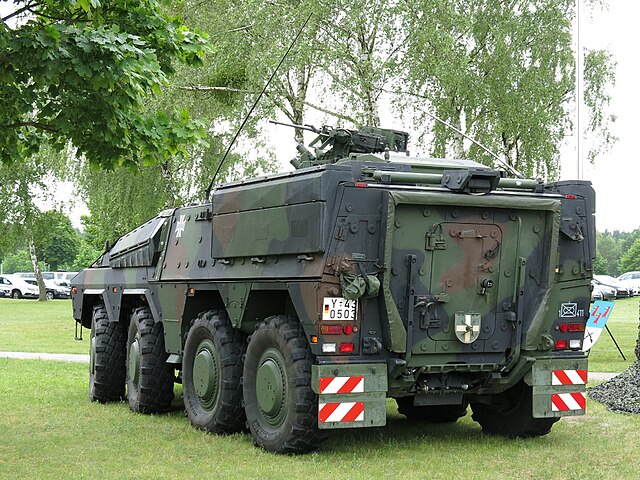
GTK Boxer Fuehrungsfahrzeug (recce variante)
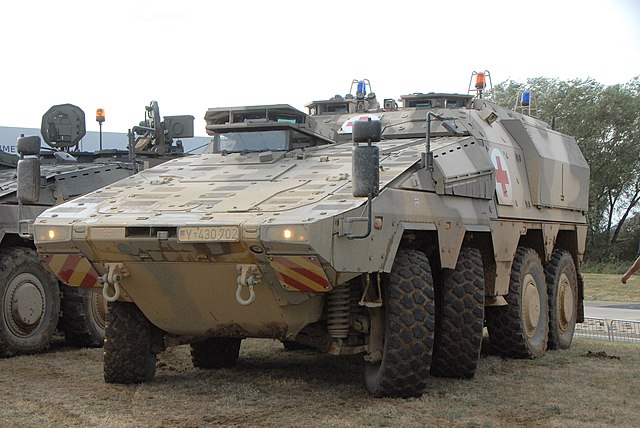
Boxer DVD Ambutank with Afghanistan colors

Tracked Boxer Mark I variant with RCT120 Mission Module, 120 mm sb gun. So far none ordered.
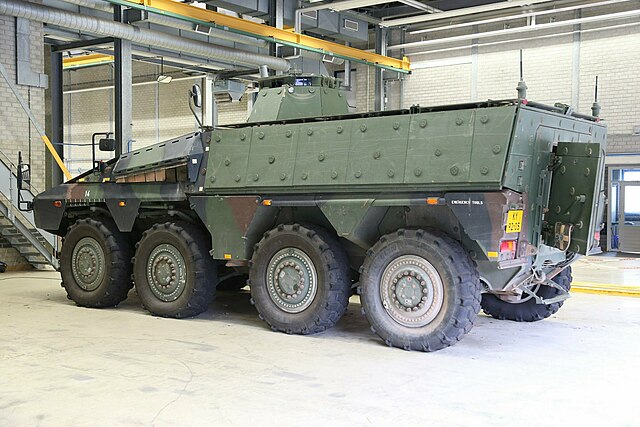
Prototype Dutch gevechtsvoertuig variant
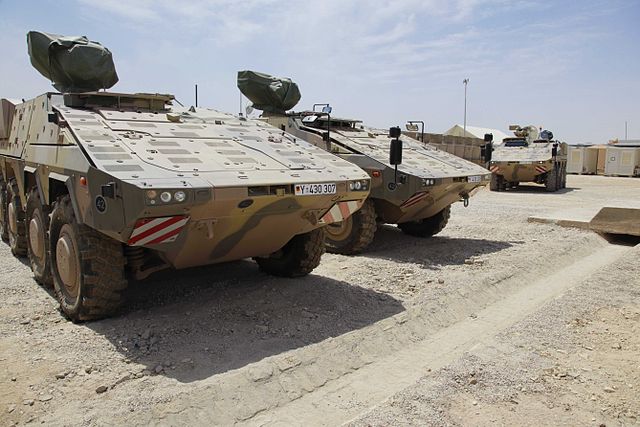
Boxers deployed at Camp Marmal
Video

Modern Tanks
Modern MBTs posters

Denel Bagder (2018)

Type 16 MCV (2016)

Gepard 1A2 last rounds 2011

SANDF

Russian AFVs

Main Battle Tanks
